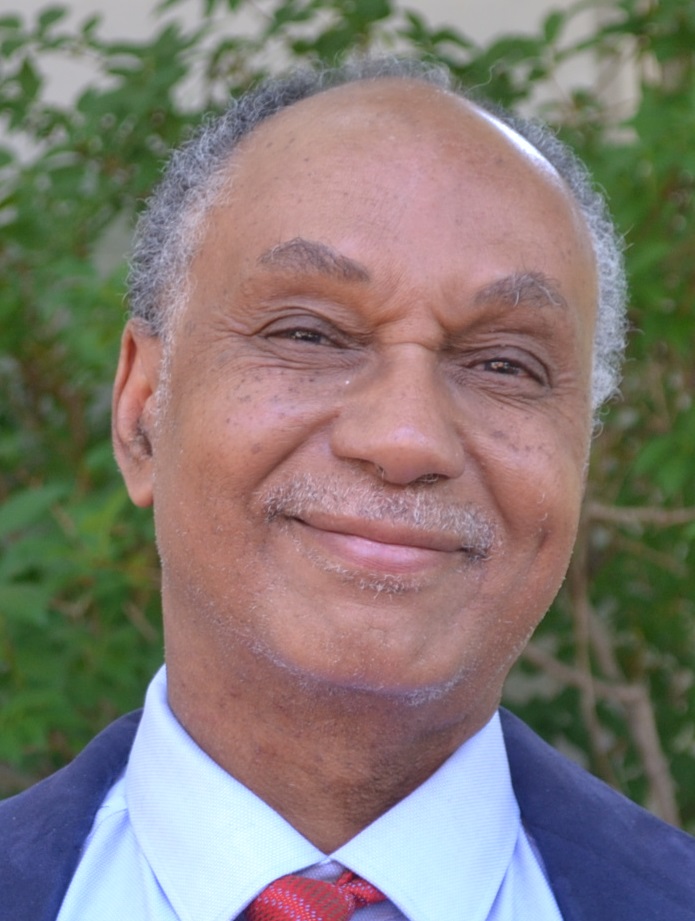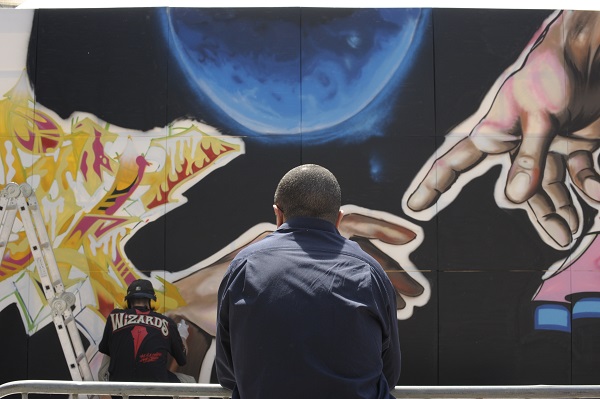 Over 20 years ago, John Gillis published a major overview of the state of European historiography in America. In “The Future of European History” (Perspectives, April 1996), he began by noting declining attendance at the Modern European Section’s sessions at the AHA annual meeting, then went on to explore changes in American approaches to the history of Europe throughout the 20th century. He surveyed the rise of new themes, such as postcolonialism and transnationalism, concluding with a call to reintegrate the study of Europe into global history.
Over 20 years ago, John Gillis published a major overview of the state of European historiography in America. In “The Future of European History” (Perspectives, April 1996), he began by noting declining attendance at the Modern European Section’s sessions at the AHA annual meeting, then went on to explore changes in American approaches to the history of Europe throughout the 20th century. He surveyed the rise of new themes, such as postcolonialism and transnationalism, concluding with a call to reintegrate the study of Europe into global history.
Where is the American study of European history a generation later, in the early 21st century? The narrative of decline remains powerful, in absolute numbers of teachers and students and in relation to other historical fields. From 1975 to 2015, the percentage of history faculty focusing on Europe at universities and colleges dropped from 39 percent to 32 percent. While the percentage of those focusing on American history grew slightly, specialists in Asian, African, and Latin American history saw sharp increases. The percentage of history departments with at least one African historian grew from under 10 to over 50 during those years.
This is not simply a matter of a rebalancing of subfields, however; it takes place within the context of the pronounced decline of enrollments in undergraduate history courses following the Great Recession of 2008. If enrollments were rising, the greater diversity of areas of study might not seem a crisis for a well-established field like European history, but with scarcity comes a sense of competition for student enrollments and faculty positions. Whether or not it reflects reality, this competitiveness only reinforces the sense of decline.1
Some of the challenges facing European history are due to the notion of “Europe” as an idea—indeed, an ideology—as much as a geographical location.
This narrative has its limits: nearly 90 percent of all history departments have a defined specialty in Europe. It is hard to imagine a large department not having both undergraduate major specializations and PhD programs in European history, and the field is well represented at institutions mainly serving undergraduates. But European history faces other challenges, too, in large part due to the notion of “Europe” as an idea—indeed, an ideology—as much as a geographical location. Many European historians have traditionally earned their bread and butter by teaching lower-division courses in Western civilization, yet the very idea of a universal cultural model emanating from Europe is now quite contested, both in the historical profession and in public debate.
Of course, Western civ does have influential defenders. In a recent op-ed in the New York Times, David Brooks pinned the election of Donald Trump on the course’s supposed decline: “This Western civ narrative came with certain values—about the importance of reasoned discourse, the importance of property rights, the need for a public square that was religiously informed but not theocratically dominated. It set a standard for what great statesmanship looked like. It gave diverse people a sense of shared mission and a common vocabulary, set a framework within which political argument could happen and most important provided a set of common goals.”2
More than a thousand readers left comments on the article, one of whom responded, “Plenty of people are fighting for the true values of Western civilization. We just aren’t fooled any more by the proclamations of rich white men who built their empires on the backs of the ‘others’ and whose value system included ‘the white man’s burden,’ committing genocide against the First Nations, slavery, and apartheid.” Dissatisfaction with the notion of Europe as a font of universal values is not confined to the academy.
Western civ and European history courses are not the same thing, but the debate about the nature and future of the former is relevant to our reasons for teaching the latter. Professional historians have played a major role in challenging the canon of European history. In Provincializing Europe(2000), Dipesh Chakrabarty explored ways in which universalist ideas about modernity and progress drawn from the European experience shaped and distorted Indian history. To Chakrabarty, Europe is an idea rather than a place.
To some, however, this critique is consonant with the view that European history (and to a certain extent all history) is the study of dead white men. The study of Europe supposedly lacks in diversity and multicultural themes. (It is perhaps no accident that one major exception to this supposed rule, the history of European Jews and the Holocaust, remains one of the most engrossing themes in European historiography, both to students and to the public.) As the American population has grown more diverse, with large numbers of immigrants from Asia, Latin America, and Africa as well as their descendants, the idea of Europe as the predecessor and cultural crucible of the United States seems to have become less attractive.
The debate about the nature and future of Western civ courses is relevant to our reasons for teaching European history.
Today, the traditional vision of Europe does not resonate with most American historians of the field, partly because our research and writing guide us to national histories. Ironically, many of us teach European history. I have taught such courses for many years, and one of my favorites has been the history of Europe in the 20th century. Yet I have never attended a conference in European history. Instead, I go to those devoted to the history of France. In this country alone, there are three scholarly societies devoted to French history, and keeping up with all of them is a challenge. In contrast, few organizations bring together scholars studying different European countries. Transnational perspectives of modern Europe often emphasize comparisons with the colonial world or the United States, rather than other European countries. Even discussions on the decline of European history often focus on individual European national historiographies.3
 Given that, the idea that “Europe” stands for a universalist teleological approach to modern history finds little support among Europeanist historiographies. In fact, one can find Chakrabarty’s critiques of normative modernity within European historiography. The debates among German historians about the Sonderweg thesis—according to which modern Germany’s “deviation” from the true paths of British economic and French political modernity led to the triumph of the Nazi state—are a case in point. Among American historians of Europe, therefore, there is little support for the lofty idea that “Europe” sets the standard for modernity and serves as its beacon.
Given that, the idea that “Europe” stands for a universalist teleological approach to modern history finds little support among Europeanist historiographies. In fact, one can find Chakrabarty’s critiques of normative modernity within European historiography. The debates among German historians about the Sonderweg thesis—according to which modern Germany’s “deviation” from the true paths of British economic and French political modernity led to the triumph of the Nazi state—are a case in point. Among American historians of Europe, therefore, there is little support for the lofty idea that “Europe” sets the standard for modernity and serves as its beacon.
More generally, Americans who write about or study European history today have made great strides in responding to past critiques and embracing new perspectives. Most impressively, the histories of European empires and colonial regimes now constitute a central part of the discipline of history. In my own field, historians are increasingly exploring the extent to which France is a global rather than just a European nation. European historians have also devoted more attention to questions of racial difference, not just in the modern era but also in ancient, medieval, and early modern Europe. Since this part of the world gave rise to the modern nation-state, scholars are trying to determine how transnational approaches entail a critical and comparative analysis of the nation rather than simply dismissing inquiry about it.
Even discussions on the decline of European history often focus on individual European national historiographies.
At the same time, Europeanists, like other historians, have had to adapt to a new era of scarcity in faculty employment and departmental offerings. Jobs remain few, and many departments look for someone who can teach European history and other fields, either geographical or thematically defined. Few history departments can afford to employ multiple specialists in early modern and modern European nations (such as scholars of Tudor/Stuart and modern Britain) as well as full complements of ancient and medieval historians. For undergraduates, this gap will be filled to a certain extent by adjunct faculty, but for graduate students, faculty shortages threaten both the quality of their education and their future job prospects. Many will succeed, as in the past, by developing thematic specialties in fields like gender, environmental, and digital history, opening opportunities not necessarily connected to their Europeanist research specialties.
Finally, the shape of the Americanist historiography of Europe during the 21st century will be determined in large part by the shape of Europe itself in the contemporary era. The historiography of the 20th century was shaped by the two world wars, the Cold War, and decolonization. World War II often remains the highlight of European survey courses. The challenges of the 21st century, including globalization, European integration, immigration, and political populism, will no doubt continue to attract Americans to the study of European history, leading them once again to search its past for insights into contemporary problems.
Tyler Stovall is president of the AHA.
Notes
1. Robert B. Townsend, “The Rise and Decline of History Specializations over the Past 40 Years,” Perspectives on History, December 2015.
2. David Brooks, “The Crisis of Western Civ,” New York Times, April 21, 2017.
3. See, for example, Catherine Epstein, “German Historians at the Back of the Pack: Hiring Patterns in Modern European History, 1945–2010,” Central European History 46, no. 3 (September 2013); Jan E. Goldstein, “The Future of French History in the United States: Unapocalyptic Thoughts for the New Millennium,” French Historical Studies 24, no. 1 (Winter 2001).

This work is licensed under a Creative Commons Attribution-NonCommercial-NoDerivatives 4.0 International License. Attribution must provide author name, article title, Perspectives on History, date of publication, and a link to this page. This license applies only to the article, not to text or images used here by permission.
The American Historical Association welcomes comments in the discussion area below, at AHA Communities, and in letters to the editor. Please read our commenting and letters policy before submitting.
Tags: From the President AHA Leadership Europe
Comment
Please read our commenting and letters policy before submitting.






